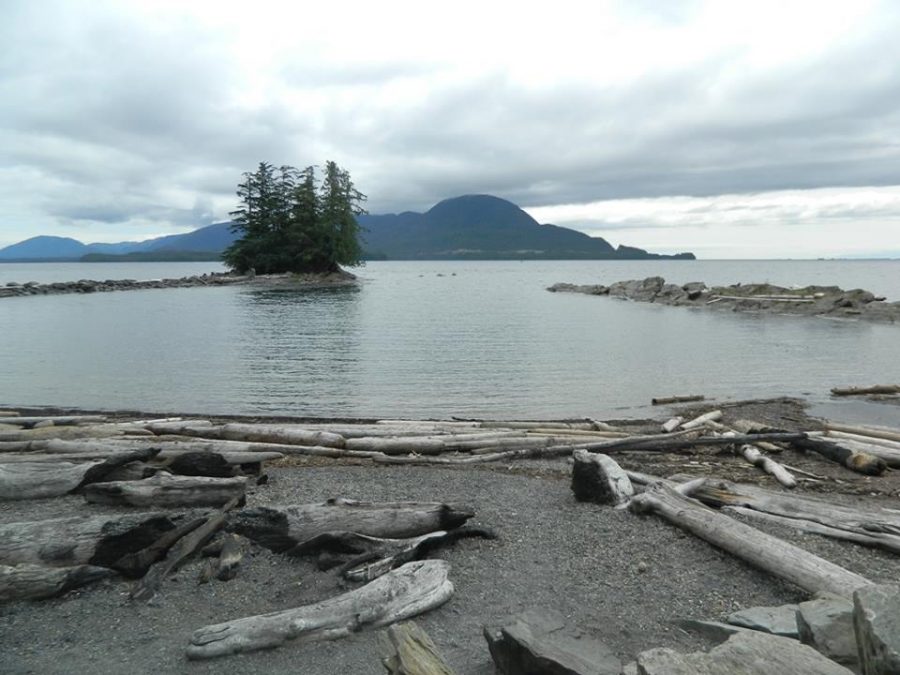
Rotary Beach south of Saxman is also called Bugge’s Beach. (KRBD file photo)
A final report from last summer’s coastal bacteria monitoring program was released last week, showing that human waste was the biggest source of high bacteria levels along Ketchikan’s coastlines. The report also states that cruise ships are an unlikely culprit.
The BEACH monitoring program is federally funded, and is meant to promote public health at recreational beach sites. It’s a national program, and the state administers monitoring efforts in various communities.
Here’s Gretchen Pikul from the state Division of Water.
“Communities that have participated in the BEACH program include Anchor Point, Anchorage, Dillingham, Douglas Island, Haines, Homer, Juneau, Kasilof, Kenai, Ketchikan, King Salmon, Naknek, Nome, Petersburg and Wrangell,” she said.
Last year was the first time Ketchikan water has been tested regularly for potentially harmful bacteria. Samples were collected by trained Ketchikan Indian Community employees.
“The program objective is to assess the potential fecal waste contamination during the recreational season,” she said. “And if the levels are elevated, then to determine if they are human sources that are contributing factors, and also to inform the public if there are elevated levels.”
Ocean water samples were collected nearly every week July through September from nine popular beach sites. All the sites regularly showed high levels of enterococci bacteria, which can cause stomach upset and infections. Fecal coliform levels also were high.
Pikul said precautionary measures are recommended when bacteria reach those levels.
“Some of those are to avoid swimming, to avoid exposure to the water, if you have had contact, to wash afterwards, and to rinse your fish with clean water if you’ve harvested in those areas, and to always cook your fish to a minimum of 145 degrees Fahrenheit to destroy the pathogens that are in there,” she said.
The Alaska Department of Environmental Conservation sent samples of the collected bacteria for source analysis. According to the report, human markers were found in samples from all nine sites. Two sites also showed dog and seagull markers.
The report states that potential human sources of bacteria include private and public sewage outfalls, sewer line breaks, septic tanks, wildlife, pet waste, and discharge from various boats, from small personal watercraft up to ferries and cruise ships.
But, the report includes a footnote stating that “cruise ships and ferries are an unlikely source of bacteria pollution during the 2017 investigation period.”
Pikul explained why those are not likely sources.
“Many of the ships that are in there cannot release in the Ketchikan waters,” she said. “Their permit does not authorize them to. During that time period, they did not have any exceedances of their discharge. That’s why that footnote is in there.”
Pikul said there are many potential human sources in Ketchikan, and it’s likely that the water has had elevated bacteria levels in prior years; it just wasn’t tested before.
She said through this program, local residents will have information about where elevated bacteria levels are located. The community then can decide what to do about it.
“It’ll give the city and borough and the community some good information to say, ‘Hmm, maybe these are the locations we need to look at and see if we can improve on our treatment of these different sources, wherever they are,’” she said. “If it is a discharge point or an individual septic system, or the city treatment facility or people not picking up after their dogs.”
The tested areas were Seaport Beach in Saxman, Rotary Beach – which also is called Bugge’s Beach — Thomas Basin, Beacon Hill, south Refuge Cove, Knudson Cove, South Point Higgins, Sunset Drive beach and Shull Road beach.
Pikul said when testing resumes this summer, they’ll add Mountain Point and Herring Cove to the list of beaches that will be monitored.
The federal grant paying for this program requires that the monitoring occur during a recreational season. Pikul said that’s why the testing is only taking place during the summer months.





